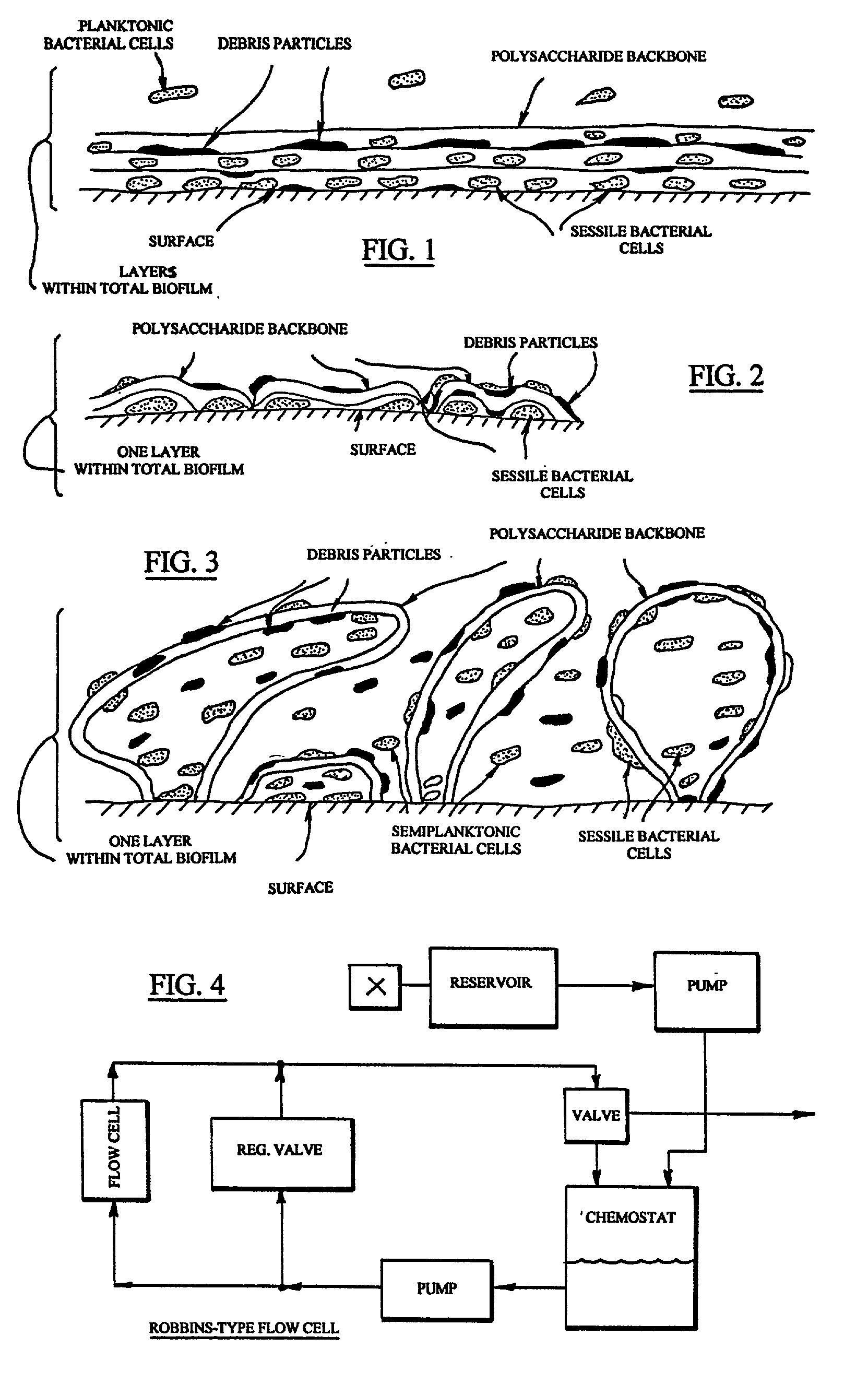Compositions for treating biofilm
a biofilm and composition technology, applied in the field of compositions for treating biofilms, can solve the problems of limited use of non-enzymatic approaches, economic inefficiency of industrial processing systems, and inability to use non-enzymatic approaches
- Summary
- Abstract
- Description
- Claims
- Application Information
AI Technical Summary
Benefits of technology
Problems solved by technology
Method used
Image
Examples
Embodiment Construction
[0125] Since Pseudomonas aeruginosa is a ubiquitous bacterial strain, found not only in the environment and in industrial settings where fouling occurs, but also in many disease conditions, it will serve as an example to illustrate the principles of the invention. Further, while there are many disease conditions for which Pseudomonas aeruginosa is the cause, ocular infections will exemplify the implementation of the invention. The choice of Pseudomonas aeruginosa as the biofilm-producing bacteria and pathogen and ocular infection as a consequence of the biofilm is not meant to preclude or limit the scope of this invention. The principles outlined in this example readily apply to all biofilms, whether produced by bacteria or other organisms, all biofilms that are generated by organisms and the embodiments, taken and implemented either individually or collectively.
[0126] Pseudomonas aeruginosa is an opportunistic bacterial species, which once colonized at a site such as ocular tissue,...
PUM
| Property | Measurement | Unit |
|---|---|---|
| thickness | aaaaa | aaaaa |
| bioadhesive | aaaaa | aaaaa |
| retention time | aaaaa | aaaaa |
Abstract
Description
Claims
Application Information
 Login to View More
Login to View More - R&D
- Intellectual Property
- Life Sciences
- Materials
- Tech Scout
- Unparalleled Data Quality
- Higher Quality Content
- 60% Fewer Hallucinations
Browse by: Latest US Patents, China's latest patents, Technical Efficacy Thesaurus, Application Domain, Technology Topic, Popular Technical Reports.
© 2025 PatSnap. All rights reserved.Legal|Privacy policy|Modern Slavery Act Transparency Statement|Sitemap|About US| Contact US: help@patsnap.com

